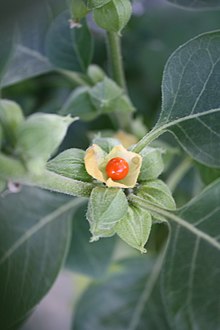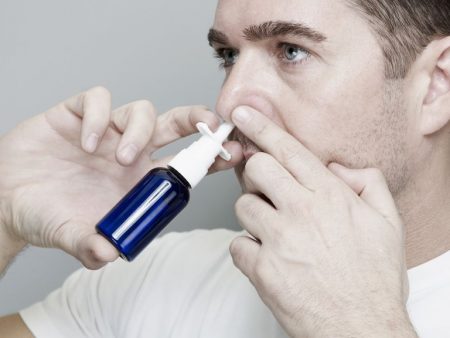Cannabidiol May Help Treat Schizophrenia
 A 2017 article by researcher Philip McGuire and colleagues in the American Journal of Psychiatry reports that when added to antipsychotic medication, cannabidiol, a component of marijuana, improved positive symptoms of schizophrenia, such as hallucinations and delusions, more than did the addition of a placebo.
A 2017 article by researcher Philip McGuire and colleagues in the American Journal of Psychiatry reports that when added to antipsychotic medication, cannabidiol, a component of marijuana, improved positive symptoms of schizophrenia, such as hallucinations and delusions, more than did the addition of a placebo.
In the double-blind, parallel-group study, 43 participants received 1000 mg/day of cannabidiol in addition to their regular antipsychotic medication, while 45 participants received a placebo alongside their regular medication.
Side effects were minimal, and after six weeks those who received cannabidiol had decreased positive symptoms and were more likely to be considered improved and not severely unwell.
Editor’s Note: It is important to emphasize that cannabidiol is only a minor component of marijuana, which contains much more tetrahydrocannabinol (THC), which is psycho-mimetic, i.e. it can worsen psychosis. Pure cannabidiol is not readily available to the public.
Withania Somnifera Herb Normalizes Sensory Processing Measure in Schizophrenia
 One of the best biomarkers of schizophrenia is low auditory mismatch negativity. Auditory mismatch negativity describes the pattern of electrical activity that occurs in the brain when a repeated sound is interrupted by a mismatched sound, such as a change in pitch or volume.
One of the best biomarkers of schizophrenia is low auditory mismatch negativity. Auditory mismatch negativity describes the pattern of electrical activity that occurs in the brain when a repeated sound is interrupted by a mismatched sound, such as a change in pitch or volume.
At the International Congress on Schizophrenia Research, Paulina S. Marell and colleagues described their pilot study of the antioxidant and anti-inflammatory herb Ashwagandha or Withania Somnifera (also known as Indian ginseng, poison gooseberry, or winter cherry). In 11 patients with schizophrenia, the herb normalized mismatch negativity compared to placebo.
Marell and colleagues wrote that the herb “recover[ed] some of the impaired early sensory/cognitive potentials in schizophrenia.” Since normal cognition relies on sensory processing, normalizing these functions in people with schizophrenia could improve their symptoms.
A 2018 study by researcher K.N. Roy Chengappa and colleagues in the Journal of Clinical Psychiatry reports that adding Withania Somnifera to patients’ regular antipsychotic medication improved negative symptoms of schizophrenia and total symptoms compared to adding placebo.
Editor’s Note: These studies, taken together, suggest the utility of adding this supplement to the treatment regimen for schizophrenia.
Sodium Benzoate Helps Treat Schizophrenia When Added to Clozapine
In a 2017 article in the journal Biological Psychiatry, Chieh-Hsin Lin and colleagues reported that sodium benzoate, a common food preservative, may augment the effects of clozapine in patients with schizophrenia.
Clozapine is the most effective antipsychotic available, but as many as 40–70% of patients with treatment-resistant schizophrenia do not respond to it. For those with a poor response to clozapine, sodium benzoate may offer some hope.
In a randomized, double-blind trial, sixty inpatients taking clozapine for schizophrenia were divided into three groups. One group received an additional 1 g/day of sodium benzoate, another received 2 g/day, and the third received placebo in addition to clozapine. Both groups taking sodium benzoate and clozapine showed improvements in negative symptoms of schizophrenia (which can include apathy and inability to experience pleasure) compared to the group taking only clozapine. The larger 2g dose also improved positive symptoms of schizophrenia (such as hallucinations or delusions) and quality of life. Changes in levels of the antioxidant catalase were linked to the total improvement in symptoms and the improvement in positive symptoms. Sodium benzoate did not seem to cause any side effects.
Editor’s Note: Sodium benzoate is a D-amino acid oxidase inhibitor that activates NMDA receptors and increases levels of the amino acid D-serine in the brain by preventing it from breaking down. D-serine can reverse the effects of the illicit drug PCP, and very high doses of D-serine have improved the effectiveness of atypical antipsychotics in people with schizophrenia. By increasing levels of D-serine, sodium benzoate may offer new benefits to people with schizophrenia, especially those who have not responded to other treatments.
20-Year Study Finds Clozapine and Long-Acting Injectable Antipsychotics Most Effective at Preventing Re-Hospitalizations for Schizophrenia
Few studies have evaluated the comparative long-term effectiveness of antipsychotics in preventing relapse, but a 2017 study from Finland published in the journal Schizophrenia Bulletin by Heidi Taipale and colleagues did just that, and found that clozapine and long-acting injectable antipsychotic drugs were most effective at preventing psychiatric re-hospitalizations.
The Finnish health care registry was used to prospectively collect data on the treatment of every person who received inpatient care for schizophrenia between 1972 and 2014. The patients totaled 62,250 including 8,719 in their first episode of schizophrenia. Follow-up to evaluate antipsychotic use began at 1996 for those with ongoing treatment, and upon first discharge from the hospital for those patients in their first episode. The follow-up time ranged from 6.9 to 20 years with an average of 14.1 years. During the follow-up period, 59% of patients were readmitted to psychiatric inpatient care.
Among the drugs with the lowest rates of relapse, olanzapine long-acting injection, clozapine, and paliperidone long-acting injection were associated with the least risk of psychiatric re-hospitalization. Among patients in a first episode, taking flupentixol long-acting injection, olanzapine long-acting injection, or perphenazine long-acting injection had the lowest risk of psychiatric re-hospitalization. Clozapine and the long-acting injections also had the least risk of hospitalization for any cause.
Single Dose of Ketamine Reduces Suicidal Ideation
A systematic review and meta-analysis by Samuel T. Wilkinson and colleagues in the American Journal of Psychiatry analyzed individual patient data from 10 studies in which a single intravenous dose of ketamine was given to patients with suicidal ideation. The review included data from a total of 167 participants.
Wilkinson and colleagues found that ketamine reduced suicidal ideation within 24 hours, and these effects lasted for up to seven days. Mood also improved, but the reduction in suicidal ideation was independent of the degree of improvement in depression.
Among the participants, 54.9% were free of suicidal ideation at 24 hours after the infusion, 60.0% were free of suicidal ideation one week after the infusion, and 61.1% were free of suicidal ideation at two weeks.
Editor’s Note: The authors report that there is much to clarify about ketamine treatment before it can be used clinically to treat patients at risk for suicide. However, ketamine’s powerful and rapid effects offer an interesting alternative to other slow-acting treatment options, and could be an ideal acute treatment for patients arriving in an emergency room because of high suicide risk. A ketamine injection could be especially useful for those who are not admitted to the hospital, as it could produce anti-suicidal effects that could help carry a patient over until their next psychiatric appointment.
Mixed Findings for Intranasal Ketamine
The drug ketamine can rapidly and temporarily improve depression when delivered intravenously. Researchers have been working on extending ketamine’s effects and finding easier ways of delivering the medication. One new delivery method under investigation is nasal spray, which could be used repeatedly to extend ketamine’s effects.
Unfortunately, researcher Colleen Loo reported in the Journal of Psychopharmacology in 2018 that a pilot study of self-administered intranasal ketamine for severe depression was suspended when 5 of the 10 participants had side effects that included high blood pressure, psychotic symptoms, and motor incoordination that made them unable to keep using the spray. Early in the four-week study, dosage was adjusted to leave more time between sprays, but this was not enough to prevent the problems with side effects.
Loo said that the nasal spray version of ketamine has complications including variations in absorption among different people and on different days, depending on factors like mucus in the nose and exact application techniques. Its rapid absorption into the bloodstream could lead to high peak levels in certain people.
Loo and colleagues had previously found that elderly patients receiving injections of ketamine under the skin required highly individualized dosing to avoid side effects. This may also be the case with nasal spray.
While Loo’s study found intranasal ketamine infeasible for the moment, Janssen Research and Development, a pharmaceutical company owned by Johnson & Johnson, reported positive results in phase 3 clinical trials of intranasal esketamine (a component of ketamine) at the annual meeting of the American Psychiatric Association in May. Researchers for Janssen reported that intranasal esketamine was highly effective for depression and well-tolerated both in acute treatment and over a year-long period. Janssen is now pursing approval for the drug from the US Food and Drug Administration.
Repeated Ketamine Reduces PTSD and Depression in the Short Term
In a 2018 open study by C. Sophia Albott and colleagues in the Journal of Clinical Psychiatry, veterans with post-traumatic stress disorder (PTSD) and a simultaneous diagnosis of major depression were treated with six infusions of intravenous ketamine over a 12-day period (Mondays, Wednesdays, and Fridays for two weeks).
Ketamine produced large improvements in both conditions. The remission rate was 80.0% for PTSD and 93.3% for depression. The median time to first relapse after the treatment was 41 days for PTSD and 20 days for depression.
One side effect of ketamine was that dissociative symptoms increased temporarily with repeated infusions. PTSD symptoms did not worsen among those participants taking ketamine.
The study was intended to evaluate the efficacy, safety, and durability of repeated ketamine infusions. Ketamine has been used in emergency rooms to rapidly treat depression and suicidality, but the effects of a single infusion fade within days. Albott and colleagues reported that this treatment scenario with multiple ketamine infusions produced rapid results that lasted longer than single ketamine infusions.
Editor’s Note: While this study found that repeated ketamine infusions were safe, it is possible that long-term use may lead to addiction. Researcher Nolan R. Williams and colleagues reported in a 2018 article in the American Journal of Psychiatry that ketamine works via activation of the opiate receptor. The drug naloxone, which rapidly reverses opiate overdose, completely blocked ketamine’s antidepressant effects.






